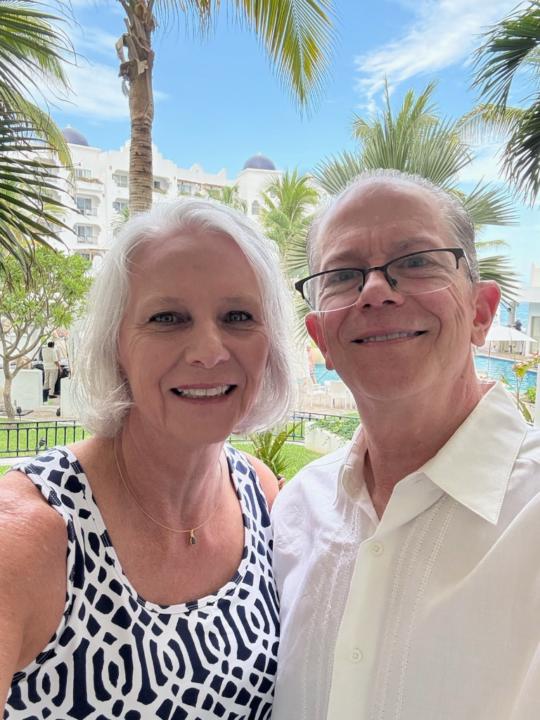Activity
Mon
Wed
Fri
Sun
Oct
Nov
Dec
Jan
Feb
Mar
Apr
May
Jun
Jul
Aug
Sep
What is this?
Less
More
Memberships
Castore: Built to Adapt
310 members • Free
6 contributions to Castore: Built to Adapt
Seeking advice.
I have what I believe to be an acute strain to the plantar fascia. (36 hours) Trying NOT to throw the kitchen sink at it. Readily available to me BPC-157, TB-500 GHK-CU, KPV Cartalax Red light - R+ | NIR+ wavelengths of 480nm, 630nm, 660nm, 810nm, 830nm, 850nm and 1060nm. I believe caused by increased overuse and chronic dehydration. Also fairly certain Pickleball was invented by orthopedists.
0 likes • 10d
@Mike T Nelson Thanks so much. I am able to do this without pain - which surprises me. The RPE may be beyond 6 even at body weight. My starting position 1 may have been too aggressive as my heel was well below parallel and knee was pushing beyond toes. A great stretch position but the 30 sec hold was a challenge after just a few reps. Moving into position 2 then also was work. I'm guessing this will become easier somewhat quickly as I become accustomed to the movement pattern but there is PLENTY of progression outlined in the instructions. Looking forward to it. The 3-5 second to "turn off" is an instruction I haven't heard before. It stood out as important. You mean to control the release of the contraction, right? Again, thanks for your time and sharing your expertise.
September Q&A 24th at 12noon EST
Monthly Q&A is Wed, Sept 24th at 12pm EST! Peptides, mitochondria, training, recovery, redox, nutrition nothing off limits. Can’t make it? It’s recorded. Send your questions ahead & I’ll tackle as many as possible. Don’t miss this one! Anthony Castore is inviting you to a scheduled Zoom meeting. Topic: Anthony Castore's Zoom Meeting Time: Sep 24, 2025 12:00 PM Eastern Time (US and Canada) Join Zoom Meeting https://us06web.zoom.us/j/3374982270?pwd=df4BMZNo1LubZaVOX40y7ApApJMNh1.1&omn=86062393294 Meeting ID: 337 498 2270 Passcode: 12345 --- One tap mobile +13052241968,,3374982270#,,,,*12345# US +13017158592,,3374982270#,,,,*12345# US (Washington DC) Join instructions https://us06web.zoom.us/meetings/86062393294/invitations?signature=ifWS2d8Nthqfmi1D1qiFFAu-MxuZwFKHQvHy7dxGD68
Kidney Article Part 3 — Biomarkers and Measurement
One of the most powerful ideas in cellular medicine is that the “invisible” can be made visible. The pathways and dominoes that tumble inside our cells aren’t just abstract concepts—they leave fingerprints that can be measured. Biomarkers are those fingerprints. They are the translation between mechanistic stress and clinical awareness, the way we can peer inside the dance of mitochondria, immune tone, vascular health, and repair. In kidney disease, the biomarker story tells us exactly how the first domino set the others into motion. Think first of redox balance. When mitochondria lean too heavily on glycolysis and electron flow becomes inefficient, NAD+ pools drain and NADH builds. The NAD+/NADH ratio is the gold-standard reflection of redox status, showing whether the cell is running smoothly on oxidative phosphorylation or choking on excess reducing equivalents. A low ratio means sirtuins like SIRT1 and SIRT3 are silenced, leaving DNA less protected and repair less efficient. It’s like a city that once had a thriving team of repair crews, now sitting idle because their wages dried up. Alongside this, the lactate-to-pyruvate ratio offers a more accessible proxy. High lactate with relatively low pyruvate tells us glycolysis has become dominant, confirming that cells are leaning on the quick-and-dirty survival pathway rather than efficient respiration. As the imbalance spreads outward, we can track inflammation. hsCRP is a workhorse biomarker here. Elevated levels tell us that NF-κB has been turned on, driving a persistent inflammatory tone. But hsCRP alone is blunt—it’s like knowing a fire alarm is ringing but not knowing which room the fire is in. Cytokine panels offer more nuance: IL-6 and TNF-alpha elevations confirm pro-inflammatory dominance, while low IL-10 shows that resolution is missing. In kidney disease, this trio tells us not just that inflammation is present, but that it is locked into the maladaptive side of the cycle. The vasculature offers its own set of clues. Nitric oxide metabolites can be measured directly, reflecting endothelial flexibility. Low NO levels indicate that PI3K/AKT and eNOS are faltering. Flow-mediated dilation (FMD), a functional vascular test, demonstrates whether blood vessels can widen smoothly in response to increased flow. Poor FMD is a functional echo of what is happening in the kidney’s glomeruli: rigid vessels transmitting mechanical stress downstream. Add in ICAM and VCAM, adhesion molecules that rise when endothelial walls are inflamed, and you have a detailed map of how the traffic lights of circulation are failing.
Beef Up or Burn Out? The Wild Science of Myostatin and Mega-Muscles Part 1
When people think about muscle growth, they imagine lifting heavier weights, eating more protein, or recovering better. What most don’t realize is that your body has an internal brake system designed to stop muscles from growing unchecked. That brake is a protein called myostatin. Understanding how it works is key not just for athletes chasing performance but also for clinicians dealing with muscle loss in aging, disease, or recovery from injury. Myostatin was discovered in the late 1990s and belongs to the TGF-beta superfamily, a group of proteins that help regulate growth and development across tissues. Its technical name is GDF-8. Farmers first stumbled on its power in Belgian Blue cattle, which carry a natural mutation that shuts the brake off. The result is double-muscled animals with enormous size but also some trade-offs in efficiency. A few rare humans have similar mutations, including one documented case of a toddler with unusually large and strong muscles for his age. At the cellular level, myostatin signals through a receptor called ActRIIB. When it binds, it activates SMAD2 and SMAD3 proteins that travel into the nucleus of muscle cells. Once inside, they flip genetic switches that slow down myoblast proliferation and differentiation the very processes needed to grow or repair muscle fibers. In other words, myostatin’s job is to limit both the number of fibers you build and the size they can reach once they mature. Why would the body design such a limiter? It comes down to energy economics. Muscle tissue is expensive to maintain. A bigger engine requires more fuel, more oxygen, and more repair. Myostatin helps balance growth against the available energy and ensures the body doesn’t sacrifice metabolic stability for vanity muscle. Research shows myostatin also influences fat metabolism and glucose handling. For example, it can directly regulate skeletal muscle glucose uptake in ways that aren’t just about size, suggesting it has a systemic role in balancing energy use.
The Coach’s Protocol — Pulling Back the Curtain
The members have spoke and I listened....Most coaches talk about principles. Some share theory. Very few show you exactly what they do themselves. about to change that. I’m opening up my personal playbook, the protocol I run on myself, to show you how I structure my training, nutrition, supplementation, peptides, and recovery strategies to stay at the top of my game. This isn’t a “one-size-fits-all” plan. It’s the real system I use, built from: - Lab data and cellular feedback loops - Peptide science and mitochondrial optimization - Periodized training matched to performance goals - Nutrition timing dialed to physiology, not fads You’ll see the exact tools, dosages, timing, and reasoning I use and how I adjust based on metrics, recovery, and results. If you’ve ever wondered how a coach integrates the science into a living, breathing system… this is your chance to see it in action. Drop a 🔥 below if you want to see the full breakdown of The Coach’s Protocol.I will likely do this as a webinar. Let me know your thoughts who would be interested in seeing this to kick off our monthly case study feature.
1-6 of 6


